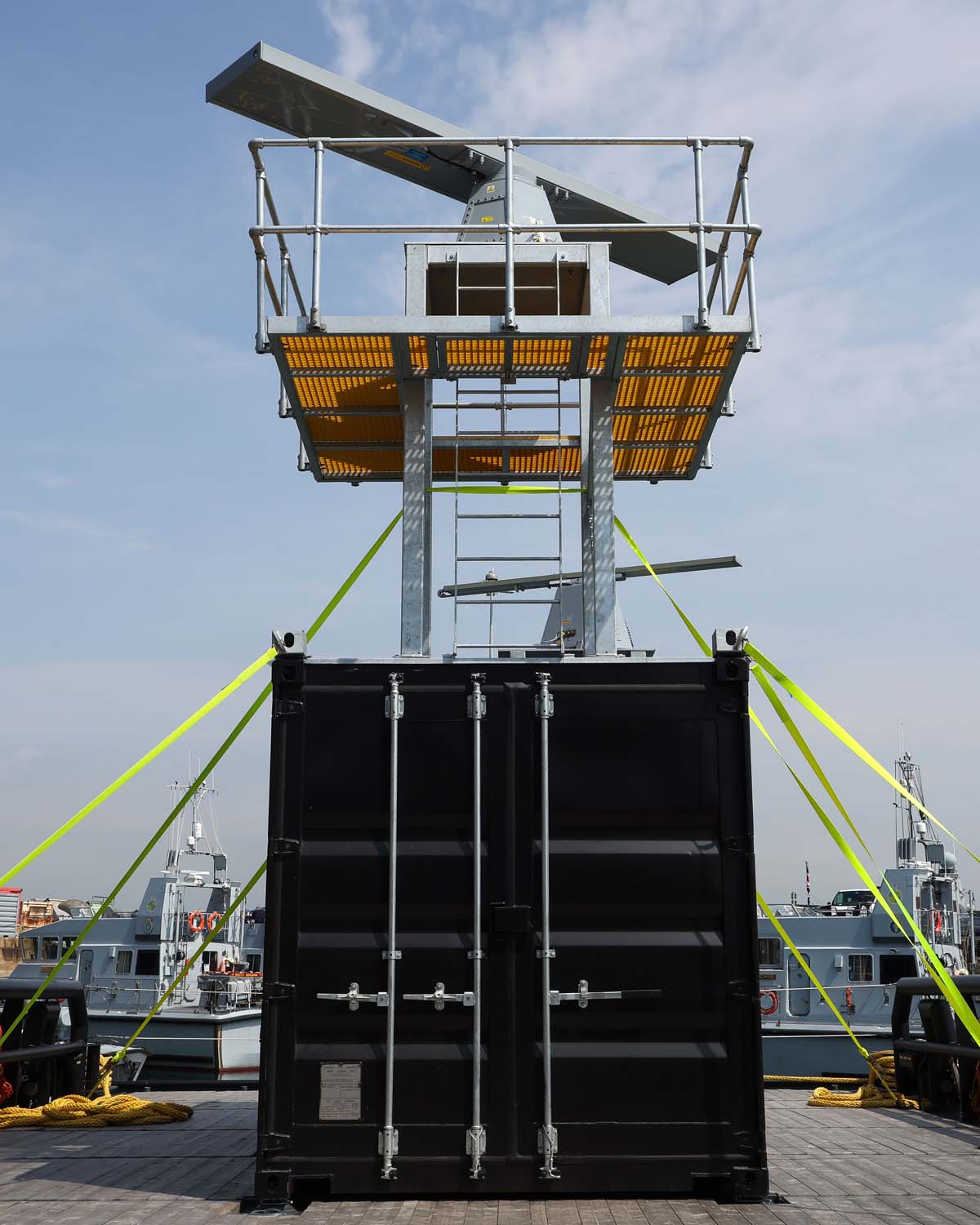Royal Navy experimentation ship XV Patrick Blackett is testing new radars and software which will create a safer and better-supported solution to the equipment currently used by the Fleet. The distinctive black and dark grey vessel had the two pieces of kit strapped to her deck for a series of tests and trials along the south coast. The larger of the two radars, RT1084 currently installed on Type 23 frigates, is used to support navigation while the smaller RT1083 system is destined to replace the existing RT1007 for navigation and aviation used across multiple ships, including Hunt-class minehunters. In a first for the navy and the MOD’s Defence Equipment and Support (DE&S), the radar was loaded on to Patrick Blackett for a thorough assessment ahead of its installation.
Blackett’s commanding officer Commander Michael Hutchinson said,“This type of work is exactly what the vessel should be utilised for. Testing new equipment such as the radars is one of the reasons Patrick Blackett was procured by NavyX. We have at our disposal a dedicated testbed that we can use to support these sort of trials. It means we don’t have to take up the time of the Type 45s or 23s. We can get as much evidence as possible for the full replacement programme by taking these radars to sea and using them in real-world scenarios. The ship has demonstrated in the past few weeks that it can work on future technologies very much in the early stages of development, but with the huge potential, all the way through to equipment that we need in the here and now.”

Chris Evans, who’s been working on the project for DE&S, said,“The real-world application Patrick Blackett can offer is important. Before we didn’t have the ability to test some of this technology at sea and make tweaks and any necessary changes. All this had to be done once installed on the ship which wasn’t ideal. Now, we can take it to sea and test it in a dynamic environment which hasn’t been an option in the past.”
In the past, the equipment would have gone from the factory floor to testing ashore and then onto the desired ship and any problems would have had to be sorted in the field – or force the ship to return to port. But with Patrick Blackett available for this sort of work, any teething problems can be sorted ahead of final installation. Patrick Blackett and her ship’s company of five sailed to Cowes and used the new navigation radar to manoeuvre and navigate around yachts, jet skis, tankers and other traffic in the Solent. The two radars have been loaded onto a PODS (Persistent Operational Deployment System) to replicate the height they would be on the Hunt-class ships, with all the software, wires and data screens able to be stored inside when not in use for the trials. This trial comes two weeks after Patrick Blackett worked with Imperial College London to test a quantum navigation system.
















